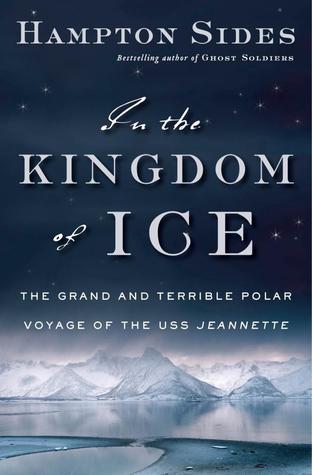More on this book
Community
Kindle Notes & Highlights
Read between
January 10 - January 25, 2023
He wouldn’t attend De Long’s divine service on Sunday, either. “I believe in nature,” he said. “Nature is my God. I don’t believe in the hereafter. This world is where we get all our punishment.”
The most famous, or soon to be famous, scientific eminence on board the Corwin was a Scottish-born botanist who had lately been studying the role that glaciers had played in the sculpting of Yosemite Valley. A wiry man with a shaggy red beard and the burning blue eyes of a half-crazed bard, he regularly wrote for the San Francisco Evening Bulletin—although, in his deepest soul, he was a poet. His name was John Muir.
The ship would make several stops in the Aleutian Islands. As far as Muir could see, the native Aleuts had been virtually ruined by their contact with “civilization,” first Russian and now American. Whalers, sealers, and representatives of the fur companies had introduced them to new vices while sapping the vitality from their old ways of doing things. “After paying old debts contracted with the Companies,” Muir wrote, the Aleuts “invest the remainder in trinkets, in clothing not so good as their own furs, and in beer, and go at once into hoggish dissipation, hair-pulling, wife-beating, etc.
...more
The Corwin pushed into the Bering Sea and made several stops in the Pribilof Islands, where the Alaska Commercial Company was killing and flaying some one hundred thousand fur seals each year. The farther north the Corwin ventured—to places less contaminated by outside influences—the more things improved.
Inside, Muir was surprised to find “a number of very snug, clean, luxurious bedrooms, whose sides, ceiling, and floor were made of fur; they were lighted by means of a pan of whale-oil with a bit of moss for a wick.” Muir found these people happy, well fed, and seemingly living in equilibrium with their world. “After being out all day hunting in the stormy weather, the Chukchi withdraws into this furry sanctum, takes off all his clothing, and spreads his wearied limbs in luxurious ease, sleeping perfectly nude in the severest weather.”
After the Jeannette, no other Arctic explorer undertook an expedition with a serious intention of meeting an open polar sea. Yet one prominent explorer, Norway’s Fridtjof Nansen, did deliberately lock himself in the ice above Siberia in an attempt to re-create the Jeannette’s drift. He had read that in 1885, an article of George De Long’s sealskin clothing had washed up on the coast of southwest Greenland, having followed the currents of the pack on a slow, deliberate journey of four years and five thousand miles—passing over, or at least very near, the North Pole. Surmising that this relic’s
...more


